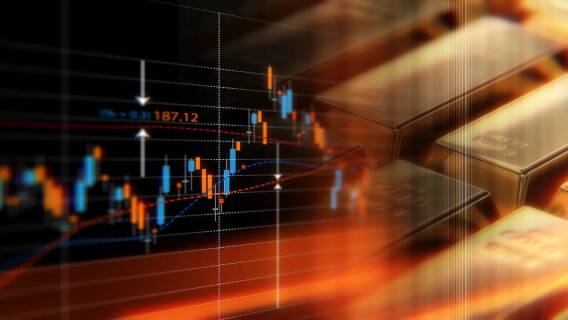Somewhat surprisingly, the 40-year high in the U.S. inflation rate this year hasn’t been a major boon for those investing in precious metals. Year to date, bullion prices are slightly down-to-flat despite an 8% domestic inflation rate. But as I’ll explain here, an argument can be made that the factors holding the metals back are on the cusp of reversing.
It’s no secret that inflation is historically the biggest ally and demand catalyst for gold, silver and other precious metals. Indeed, the metals’ currency component almost always benefits from major increases in money supply, in turn boosting metal prices.
The two biggest contributors to money supply explosions (and metal price strength) in recent decades have been recession (prompting central banks to respond by lowering rates and increasing money availability) and war (resulting in runaway deficit spending and credit creation).
By contrast, dollar strength is in fact the biggest contributor to gold’s weakness this past year, as the U.S. dollar index has embarked on its best showing in over 20 years. (As an aside, gold speculators tend to be exceptionally leveraged and use the dollar index as a cue for either buying or selling gold futures contracts.)
[text_ad]
But the dollar’s strength has come at the expense of other nations’ currencies, in turn drastically increasing inflation rates abroad while mitigating the impact of higher consumer prices here at home. However, signs have lately emerged that more than one major country is taking steps to reverse what many see as America “exporting” its inflation problem for others to contend with.
The World vs. the Dollar
Russia is one such country taking steps to reduce its reliance on the greenback, as Kremlin authorities recently initiated a policy of banning the use of dollars as collateral for transactions with Russia’s largest financial services marketplace, the Moscow Exchange. Financial commentators see the move as a significant step in a growing global trend toward “de-dollarization.”
What’s more, the world’s leading central banks aren’t holding dollars as reserves in the same quantities as in prior years. As Cary Springfield of the International Banker pointed out in a recent commentary, the dollar’s share of global foreign-exchange reserves fell below 59% in last year’s Q4, extending a two-decade decline. A quarter of the shift out of the dollar has gone into the Chinese renminbi, with the rest going into the currencies of smaller countries, according to Springfield.
A big part of the dollar’s global dominance is owing to its use as the official currency used to price commodities, particularly crude oil. The de facto dollar standard has for years conveniently allowed the U.S. to push inflated dollars away from its own shores and into foreign countries, helping to keep domestic inflation contained.
Tellingly, China has drastically reduced its holdings of U.S. Treasury debt (which recently fell under $1 trillion for the first time since 2010), while also embarking on an effort to unload dollars in order to stabilize its own currency. Even Egypt’s government has been issuing debt denominated in China’s currency as an alternative to the higher borrowing costs associated with the U.S. dollar.
And while the dollar reserves of many countries are shrinking, gold reserves are increasing as a nascent shift seems to be underway from using the dollar as a preferred safe haven to that of gold. A World Gold Council (WGC) report found that 80% of the 57 central banks it surveyed plan to increase their holdings of the metal in the coming year.
That said, as the de-dollarization trend accelerates, gold and other precious metals should begin to come into their own as the U.S. finds its ability to export inflation more limited. With a growing number of signs pointing to a weaker dollar in 2023 and beyond, precious metals investing should pay off in a big way in the years ahead.
For investors with a long-term horizon, a passive approach to investing in precious metals is recommended. While outsize gains can be made with an actively managed, stock-oriented portfolio, a highly liquid precious metals ETF or mutual fund works best for most investors. To that end, here are two precious metals funds worth considering.
2 Funds for Investing in Precious Metals
For exposure to gold, a good one-size-fits-all approach is through the Global Gold Natural Resources and Income Trust (GGN). This is a closed-end fund that invests mainly in the stocks of gold and natural resources (mainly energy) companies with the aim of earning income through a strategy of writing covered call options on the equity securities in its portfolio (it currently sports a yield of 10%). The fund features significant international diversification, with holdings in several countries including the U.S., Canada, the U.K., Australia, France, South Africa and Chile, to name but a few. The fund affords investors an opportunity to benefit from not only a gold bull market but also from strength in other commodities that feed off dollar weakness.
The ISE Junior Silver Miners ETF (SILJ) is an excellent way to have some exposure to the silver market. The fund tracks a modified market-cap-weighted index of small-cap silver mining and exploration companies (both pure and non-pure-play), providing extra leverage for bull markets in the white metal. Aside from being an inflation hedge, the ETF should also benefit in the coming years from silver’s increasing use in alternate energy applications (including electric car parts and solar panels).
[author_ad]



